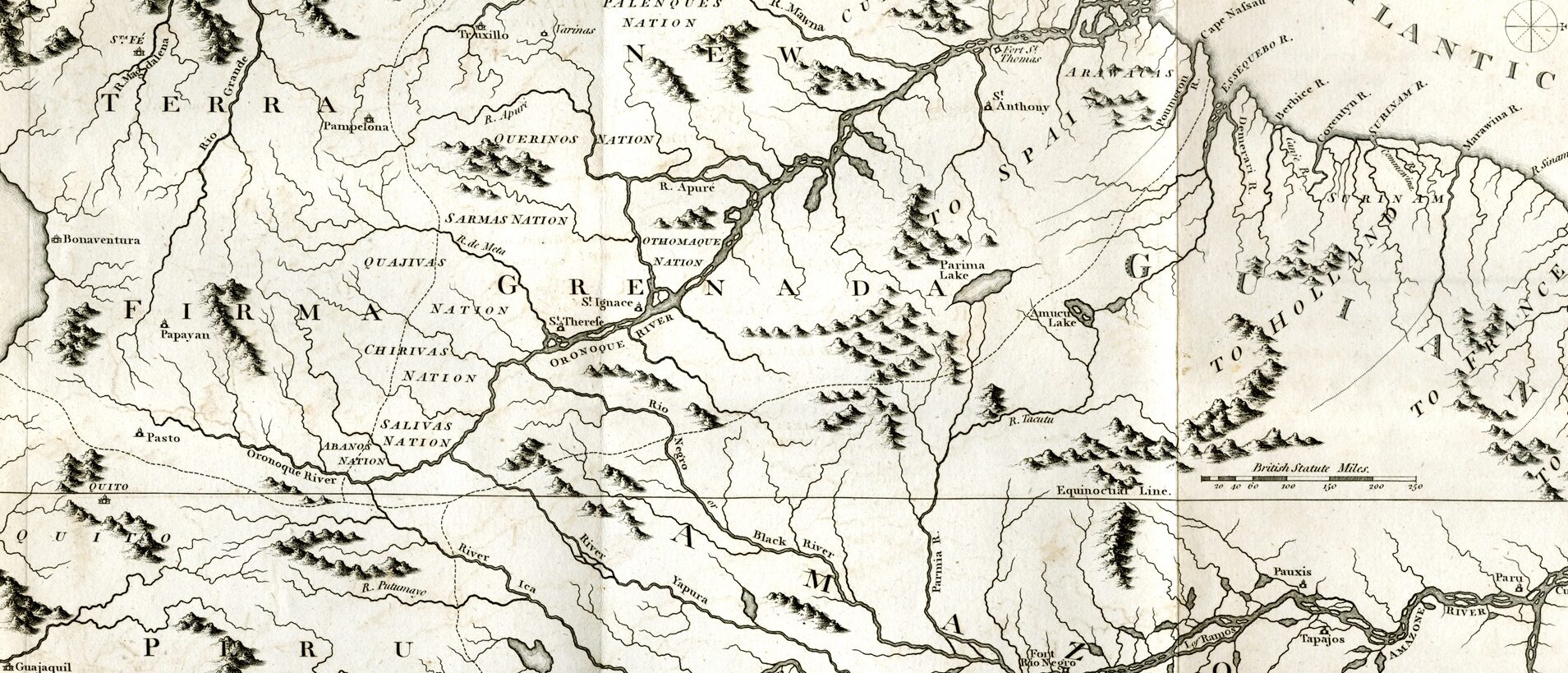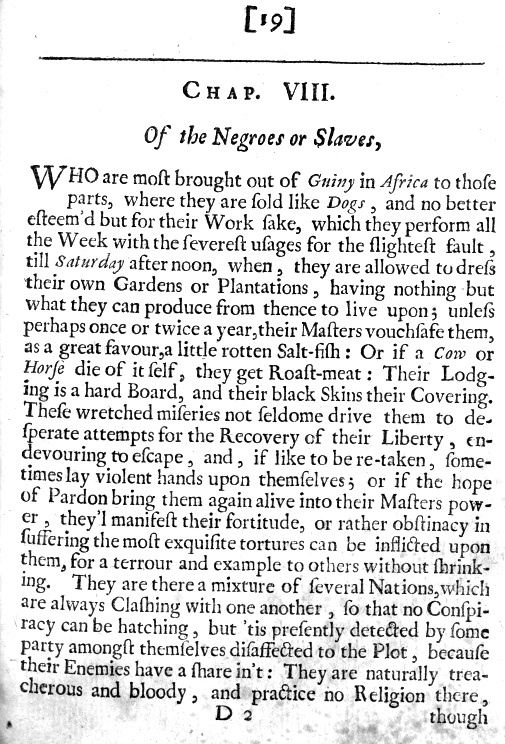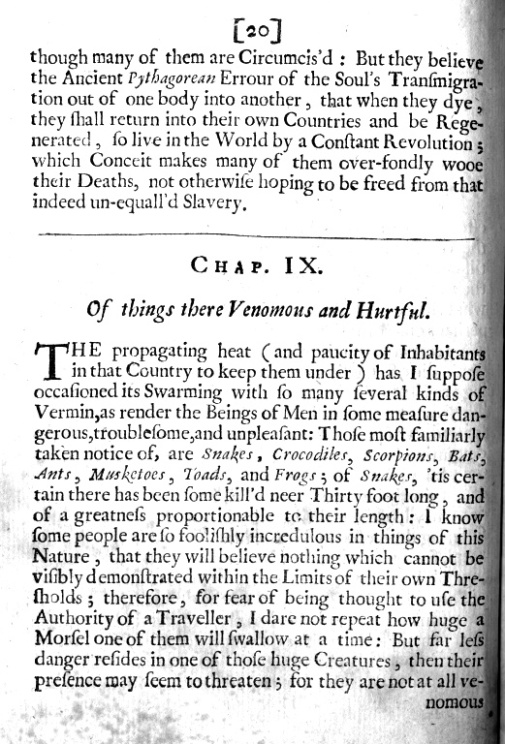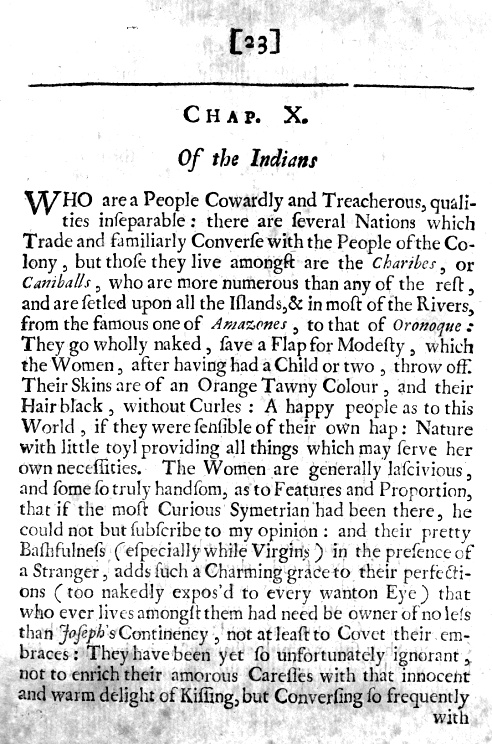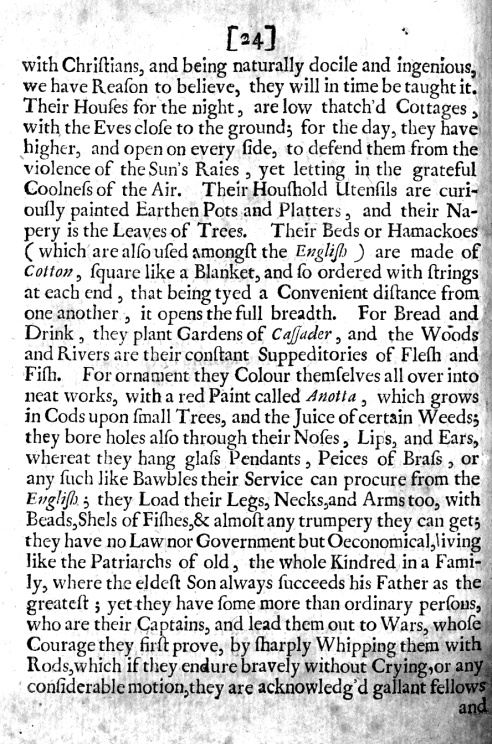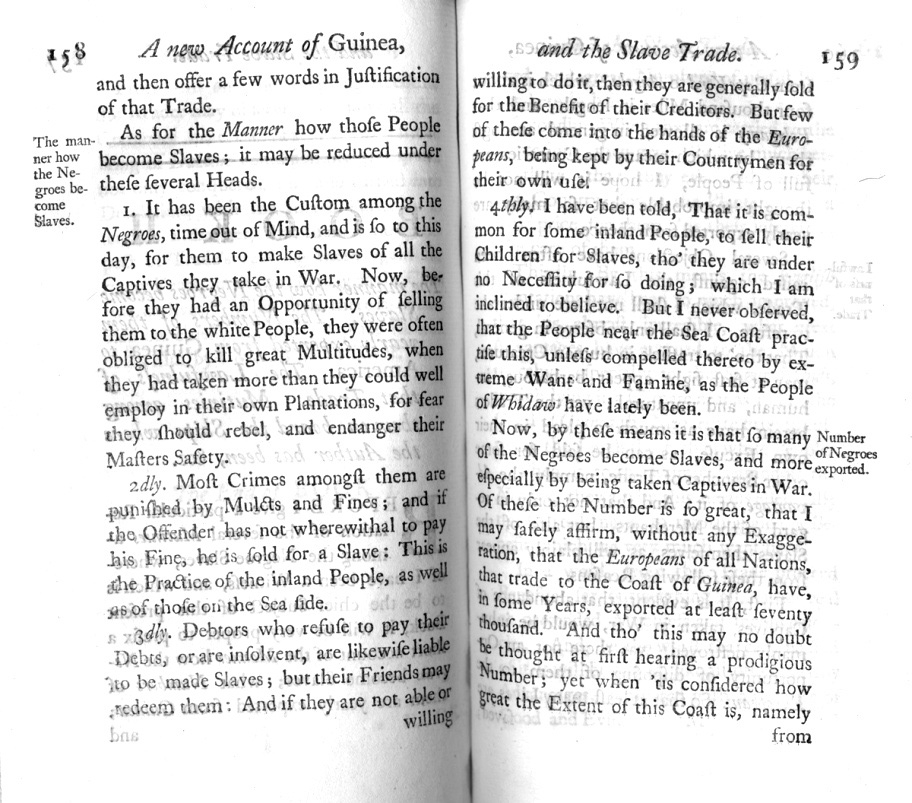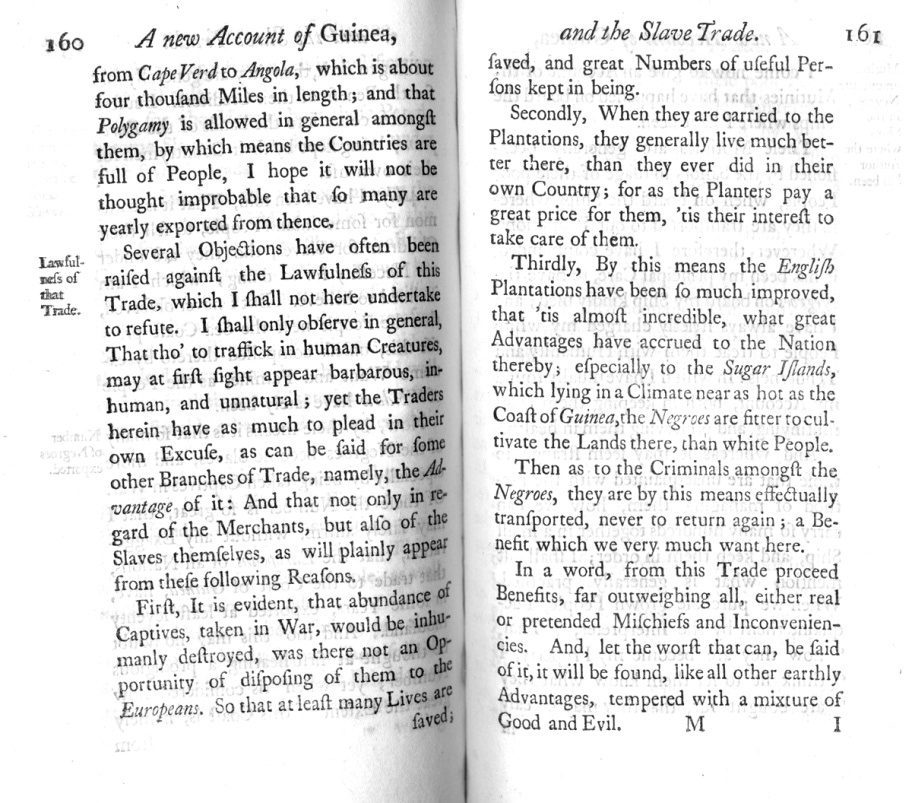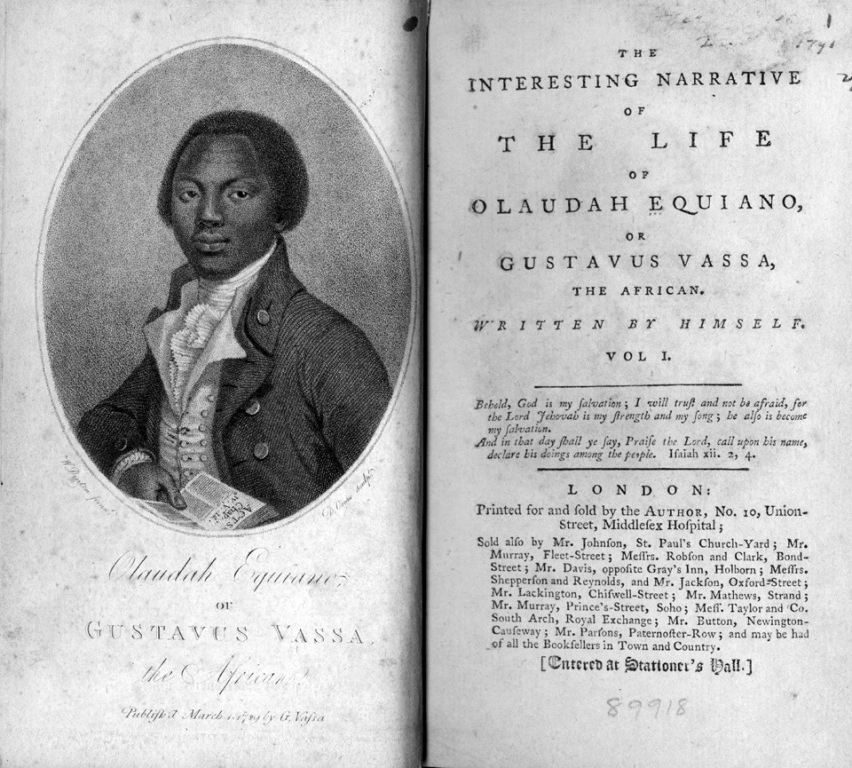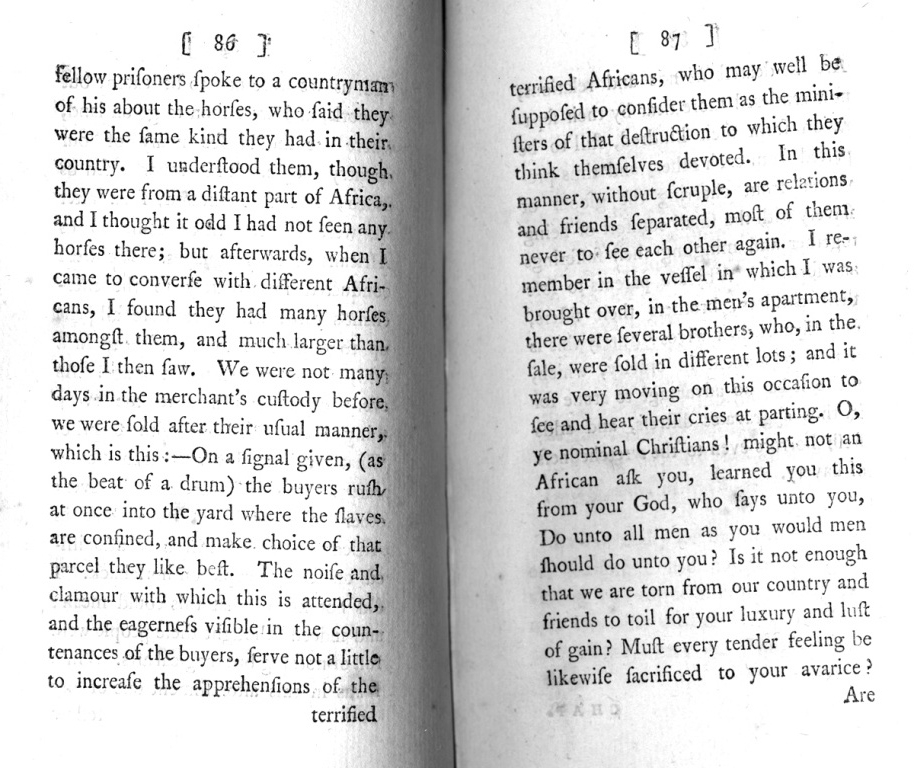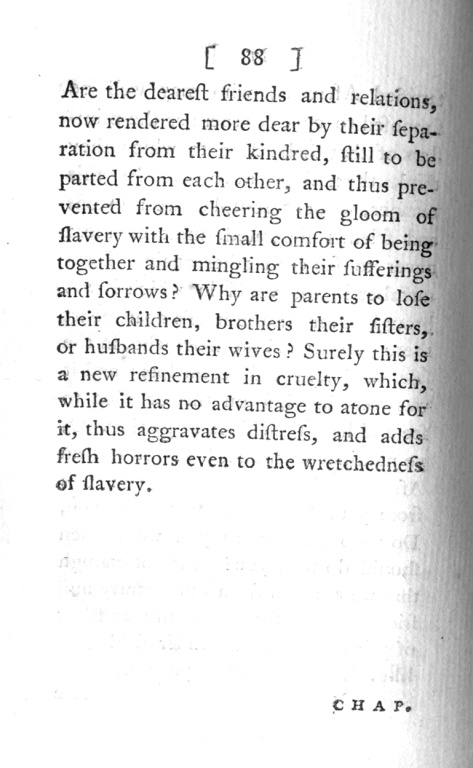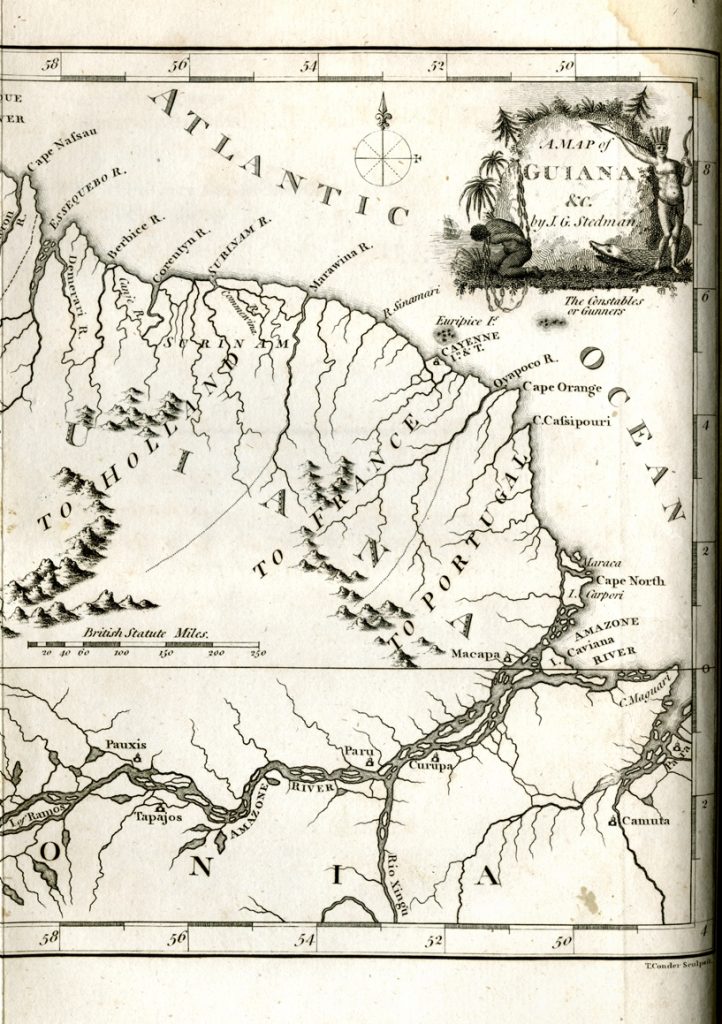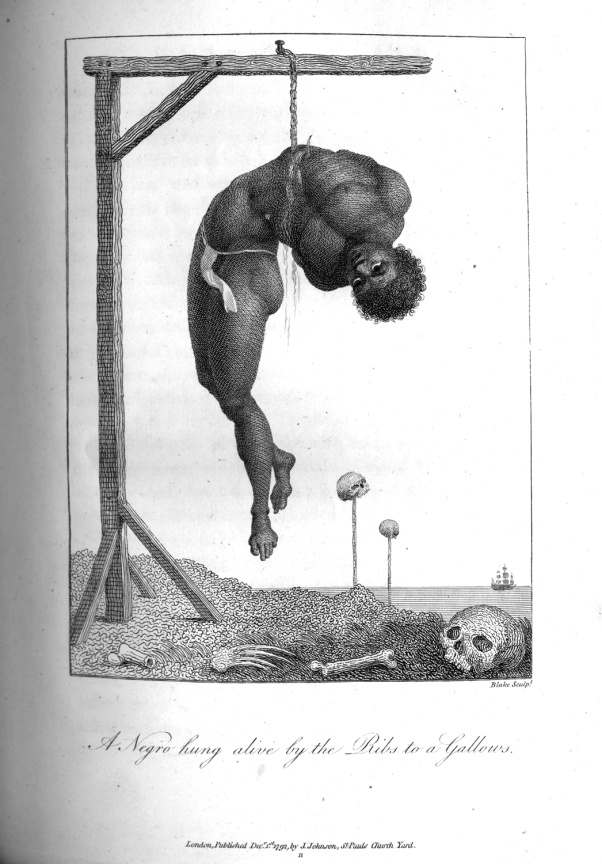Introduction
Aphra Behn published Oroonoko in 1688, a time when the Atlantic slave trade and African slavery in the Americas were becoming consolidated as a transnational, economic system. The novel draws on popular forms of literature such as the aristocratic romance, the travel narrative, and social criticism. It suggests some of the ways that English people were beginning to think about racial and cultural difference and about their own role in colonization and the slave trade. The documents that follow develop the context for Behn’s narrative and, more broadly, demonstrate how European writing on race, slavery, and colonialism evolved over the seventeenth and eighteenth centuries.
- How do the documents define specific racial and cultural groups—West Africans, Native Americans, the English, other Europeans—in relation to each other?
- In what ways do these writers portray Africans and Native Americans as racial “others”—whether idealized or vilified—and in what ways do these writers try to emphasize universal human characteristics across race and culture?
- How is the violence of slavery portrayed in the documents? How are we supposed to feel about it?
- How do these representations contribute to critiques of English and European society?
- How are stories about slavery told and re-told across different literary genres, or types of writing?
Description of Colonial Surinam
George Warren’s account of the colony of Surinam includes brief chapters on the climate, natural produce, animals, and, excerpted here, people: African slaves and Caribe Indians. The colony belonged, at this time, to the English, though the Dutch would later claim it.
Selection: George Warren, An Impartial Description of Surinam Upon the Continent of Guiana in America with a History of Several Strange Beasts, Birds, Fishes, Serpents, Insects and Customs of That Colony, &c., 19-20, 23-24 (1667).
Questions to Consider
- How does Warren portray the treatment of African slaves?
- What evidence does he give of Africans’ determination to escape slavery? What tactics do the English use to prevent conspiracies?
- How does Warren characterize the Native Americans? In what ways does he contradict himself?
- What does their nakedness represent to him? What does the passage imply about his own and other Englishmen’s responses to Native women?

Oroonoko on the Stage
Thomas Southerne adapted Behn’s narrative for the stage. The English playwright and poet, William Congreve, contributed this epilogue to Southerne’s play.
Questions to Consider
- What is the tone of this speech? How does it speak to an English audience?
- What is the point of the contrast the narrator draws between Imoinda and “London wives”?
The Slave Trade in West Africa
William Snelgrave was the captain of an English slave ship. In this book, he provides a first-hand account of two West African kingdoms, offers his observations on the slave trade, and relates his experience of being taken captive by pirates. Snelgrave devotes the first part of the book primarily to the practices of human sacrifice and cannibalism, as he allegedly observed them, in the kingdom of Dahomey. In the following excerpt from the second part, Snelgrave explains—and defends—the slave trade.
Selection: William Snelgrave, A New Account of Some Parts of Guinea, and the Slave Trade, 158-161 (1734).
Questions to Consider
- How do people become slaves, according to Snelgrave’s account?
- On what grounds does Snelgrave defend the slave trade? What does he claim are its benefits?
Oroonoko and Imoinda

This French translation of Behn’s novel includes a series of plates representing Oroonoko, Imoinda, and other characters. In Behn’s original narrative, Imoinda is African but, in Southerne’s play and de la Place’s plates, she appears white and European. In the climactic scene portrayed here, Oroonoko has concluded that escape from slavery is impossible and has resolved to kill Imoinda, then his enemies, and then himself.
Questions to Consider
- Examine the image closely. What are Oroonoko and Imoinda wearing? How are they positioned? How would you describe the style of the engraving?
- How might a representation such as this one appeal to European readers? How would it shape a reader’s understanding of the narrative? How does it contribute to the novel’s representation of slavery and colonialism?
Opposition to the Slave Trade
Olaudah Equiano, also known as Gustavus Vassa, was the slave of an English captain of a merchant ship in the West Indies. Equiano purchased his freedom from his master in 1766. He went on to become an English citizen and an important advocate for the abolition of the slave trade. In 1789 he published his life narrative, which describes his childhood in West Africa and his enslavement, first, by Africans and, then, by English slave traders who transported him to the West Indies. In the passage excerpted here, Equiano describes a slave auction and addresses his readers on the cruelty of the slave trade.
Selection: Olaudah Equiano, The Interesting Narrative of the Life of Olaudah Equiano, 86-88 (1789).
Questions to Consider
- Examine the frontispiece and title page of this edition of Equiano’s narrative. How is he portrayed in this image? How does the image compare to other seventeenth- and eighteenth-century representations of Africans? How do the image and title page work to establish Equiano’s authority as the writer of the narrative?
- How is the slave auction conducted? What is the purpose of managing the auction in this way?
- Who are the readers that Equiano addresses at the end of this chapter? Why does he call them “nominal Christians”? On what grounds does he make his critique of the slave trade?
Images of Colonial Surinam
John Gabriel Stedman published this narrative based on his experiences in the British navy, which aided the Dutch in suppressing a slave revolt in Surinam in the 1770s. Stedman’s lengthy, wide-ranging narrative includes a large number of plates portraying people (primarily African slaves) as well as indigenous plants and animals.
Selection: John Gabriel Stedman, Narrative of a Five Years’ Expedition against the Revolted Negroes of Surinam, in Guiana, on the Wild Coast of South America, map and images (1796).
Questions to Consider
- How are regions identified on the map? What does this identification suggest about Stedman’s and his readers’ approach to Guiana?
- Examine the image in the upper right corner of the map. Who or what do the figures represent? What kind of narrative does the image imply through the figures’ appearances and positions?
- The plate, entitled “A Negro hung alive,” conveys the extraordinary violence that planters used against slaves. The accompanying text describes not only horrific practices of torture and execution, but also reports of African bravery and stoicism in the face of such violence. How does the slave appear in this image? What is his expression? What else appears in the picture? What do these other objects convey? What is left out?
- The plate of the “Indian family” accompanies a description of their alleged innocence, happiness, and closeness to nature. The author goes so far as to compare Native Americans to the inhabitants of Eden before Adam’s fall. With this information in mind, how does the family appear in this plate? What are they wearing? What are they holding? In what ways does the image support the claims made in the text? How does the representation of Native Americans contrast to and, implicitly, critique European society?
- Despite Stedman’s attention, throughout the book, to the brutality of slavery, he concludes that the institution of slavery should not be abolished, but only rendered more humane. With that conclusion in mind, consider the map and the two plates together. What relationships do these images suggest between the people of Africa, America, and Europe?
Oroonoko and the Transatlantic Slave Trade
Oroonoko was published in 1688, a time in which English people were starting to think and write about their role in the consolidation of transatlantic slavery. Shown below are various textual and visual perspectives from the seventeenth and eighteenth centuries on the growing slave trade and its racial, geographical, and economic contexts.
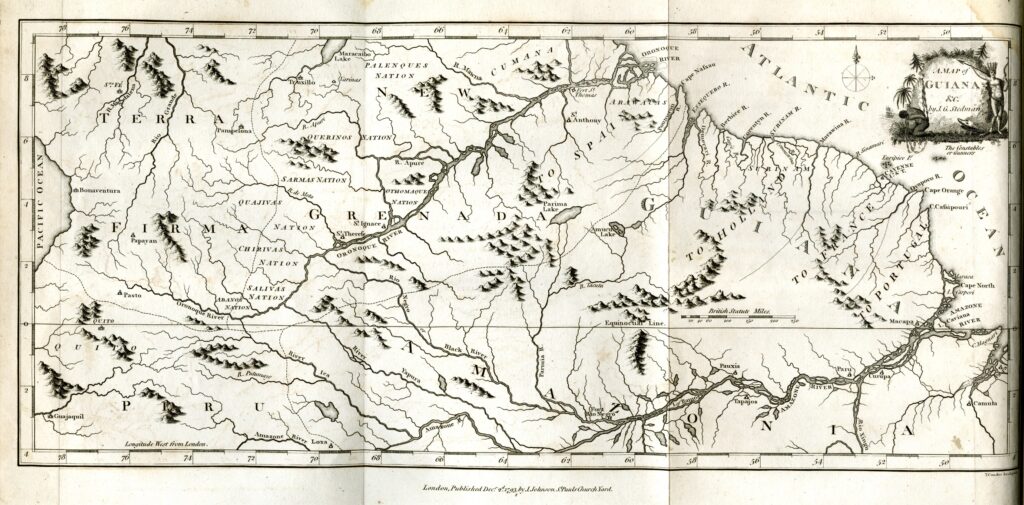
Oroonoko and adaptation/translation
Behn’s novel has been adapted and translated in various forms, including Thomas Southerne’s play, for which William Congreve wrote an epilogue, shown below. Pierre Antoine de La Place’s plates, depicting a white European Imoinda, as in Southerne’s play (contrasting with Behn’s original, in which she is a Black African), were featured in a French translation.
Further Reading
Aphra Behn. Oroonoko: A Norton Critical Edition. Ed. Joanna Lipking. 1997
Biyi Bandele. Aphra Behn’s Oroonoko: In a New Adaptation, 1999.



